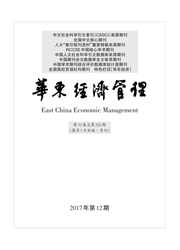

 中文摘要:
中文摘要:
文章使用DEA-Malmquist指数法测算2004-2013年江苏省28个行业的全要素生产率(TFP),并将FDI、控制变量环境规制、人力资本等与TFP纳入统一框架之下,考察FDI对制造业TFP以及分解指标的技术溢出效应。研究发现:江苏省制造业TFP年均增长2%,其中约60%是由于技术效率贡献,行业间的技术效率差距较为明显,技术进步变化差异不大。面板数据回归结果表示,FDI技术溢出效应以及吸收能力在行业间存在明显不同,技术密集型行业和劳动密集型行业存在"积聚效应"。地方政府应积极引导FDI注入的方式和内容,尤其是在劳动密集行业和资源密集行业增强FDI的根植性。
 英文摘要:
英文摘要:
This paper applies DEA-Malmquist index method to measure the total factor productivity(TFP)of 28 industries inJiangsu province from 2004 to 2013,incorporates FDI,the control variables of environmental regulation,human capital andTFP into a unified framework,and examines the technology spillover effect of FDI on the TFP and its decomposition index ofmanufacturing industry. The study shows that the TFP of manufacturing industry in the province has an average annual growthrate of 2%,in which around 60% is due to the contribution of technical efficiency,whereas the gap of technical efficiency ismore obvious and the difference of technical progress change is small between industries. The panel data regression results in-dicate that the technology spillover effect and the absorption capacity of FDI are significantly different between industries,and technology intensive industries and labor intensive industries exist"accumulation effect". Local governments should ac-tively guide the way and content of FDI introduction,especially to enhance the embeddedness of FDI in labor intensive indus-tries and resource intensive industries.
 同期刊论文项目
同期刊论文项目
 同项目期刊论文
同项目期刊论文
 期刊信息
期刊信息
